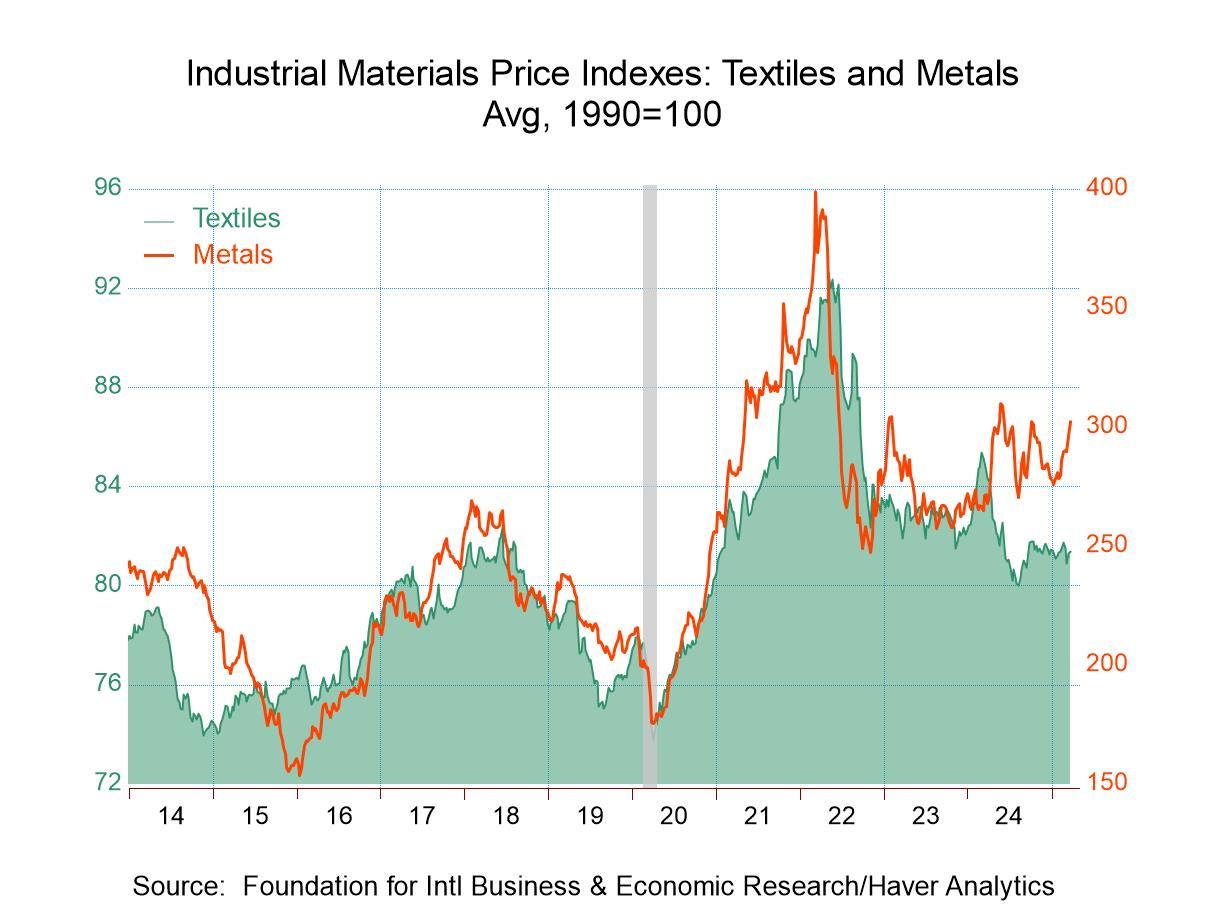U.S. Wholesale Inventories Edge Higher as Sales Jump in September
by:Tom Moeller
|in:Economy in Brief
Summary
- Inventories of both durables & nondurable goods move up.
- Sales continue to strengthen.
- Inventory-to-sales ratio weakens significantly.


Wholesale inventories rose 0.2% (-1.2% y/y) in September following an unrevised 0.1% August easing. The Informa Global Markets Survey expected no change. The rise followed six consecutive monthly declines.
Durable goods inventories rose 0.2% in September (2.9% y/y) after holding steady in August. Automotive inventories increased 0.8% (13.6% y/y) while machinery inventories strengthened 1.5% (19.8% y/y). Inventories of lumber rose 1.1% (-7.8% y/y). These gains were offset by declines in most other categories. Hardware & plumbing product inventories fell 1.2% (-3.0% y/y) and electrical equipment inventories declined 0.5% (-4.3% y/y), the fifth consecutive monthly decline. Furniture & appliance inventories were off 1.7% (-16.3% y/y) for the second consecutive month. Metals and minerals inventories fell 0.9% (-5.3% y/y). Professional & commercial equipment inventories weakened 0.4% (-7.5% y/y).
Nondurable goods inventories edged 0.1% higher (-7.2% y/y) following nine consecutive monthly declines. Most categories showed inventory decumulation. Inventories of apparel fell 2.4% (-20.1% y/y) while chemical inventories declined 1.2% (-12.9% y/y). Paper & paper product inventories fell 2.3% (-19.2% y/y) while farm product inventories declined 2.0% (-27.2% y/y). Working higher, petroleum inventories rose 4.6% (-0.4% y/y) and grocery inventories rose 1.2% (-5.2% y/y).
Wholesale sales jumped 2.2% (0.9% y/y) in September, the third consecutive month of strong increase. The Action Economics Forecast Survey expected a 0.8% increase. Durable goods sales rose 0.7% (-1.4% y/y) as motor vehicle sales increased 2.9% (5.6% y/y) and electrical equipment sales rose 4.2% (-0.7% y/y). Offsetting these increases, professional equipment sales declined 3.2% (-4.0% y/y) while furniture sales were off 2.2% (-0.4%). Machinery sales fell 0.8% (+1.7% y/y).
Nondurable goods sales surged 3.4% (3.0% y/y) as petroleum sales jumped 9.2% (6.0% y/y). Apparel sales improved 2.7% (-7.7% but chemical sales fell 0.7% (-7.5% y/y). Paper products sales rose 1.7% (-8.1% y/y).
The wholesale inventory-to-sales (I/S) ratio fell to 1.33 in September from 1.36 in August. It was the lowest ratio since July of last year. The I/S ratio for durable goods held steady at 1.83 while the ratio for nondurable goods declined to 0.92, the lowest level since November 2014.
The wholesale trade figures are available in Haver’s USECON database. The expectations figure for inventories is contained in the MMSAMER database. Expectations for sales are in the AS1REPNA database.
Today’s remarks by Federal Reserve Chair Jerome H. Powell can be found here.


Tom Moeller
AuthorMore in Author Profile »Prior to joining Haver Analytics in 2000, Mr. Moeller worked as the Economist at Chancellor Capital Management from 1985 to 1999. There, he developed comprehensive economic forecasts and interpreted economic data for equity and fixed income portfolio managers. Also at Chancellor, Mr. Moeller worked as an equity analyst and was responsible for researching and rating companies in the economically sensitive automobile and housing industries for investment in Chancellor’s equity portfolio. Prior to joining Chancellor, Mr. Moeller was an Economist at Citibank from 1979 to 1984. He also analyzed pricing behavior in the metals industry for the Council on Wage and Price Stability in Washington, D.C. In 1999, Mr. Moeller received the award for most accurate forecast from the Forecasters' Club of New York. From 1990 to 1992 he was President of the New York Association for Business Economists. Mr. Moeller earned an M.B.A. in Finance from Fordham University, where he graduated in 1987. He holds a Bachelor of Arts in Economics from George Washington University.






 Global
Global